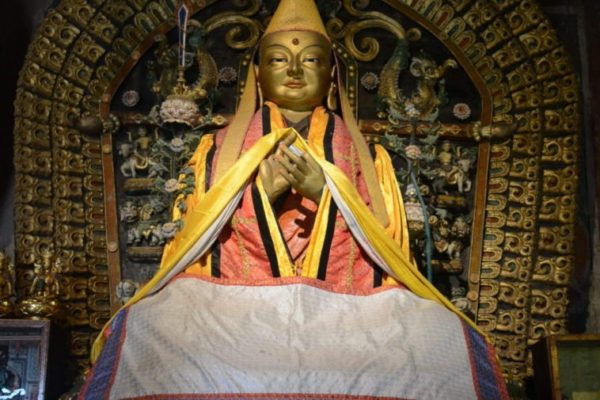Erdene-Zuu The UNESCO World Heritage Site
Set in stunning scenery, Erdene Zuu is Mongolia’s first and oldest monastery, built in 1586 on the ruins and stones of the former capital of the Mongol Empire, Karakorum, by Khalkha Mongol prince Abtai Sain Khan. The monastery is named after a Buddhist deity, Erdene Zuu means “precious lord” or “hundred treasures”. It is now a UNESCO World Heritage Site. From Erdene Zuu, Tibetan Buddhism spread throughout the country. For centuries it was the main center of Buddhism in Mongolia, which is a form of Lamaism.
Yellow Hat Buddhism of the Tibetan school was practiced in Mongolia from the very beginning and shaped the religious and social life of the people for many centuries. During the monastery’s heyday in the mid-19th century, up to 11,500 people lived within the walls and there were more than 62 temples.
The Structure of the Erdene Zuu Monastery
The monastery complex is surrounded by a 400 by 400 meter square Tibetan-style wall, into which 100 stupas and four large gates are integrated in each cardinal direction. A stupa is a monument that symbolizes Buddha. Since early Buddhism, relics of the Buddha and later also of outstanding monks have been kept there as in a shrine. Buddhists ritually circle stupas in a clockwise direction.
Within the monastic complex stands the Golden Stupa, a 13-meter-tall structure dedicated to the Bogd Khan, surrounded by eight other much smaller stupas, and a mani stone engraved with Buddhist prayers.
When it was built?
The monastery took 300 years to build. It was destroyed by Manchu conquerors in the 17th and 18th centuries and rebuilt from 1760 to 1796 and from 1806 to 1814. It fell victim to the fury of destruction again in 1937 during the Stalinist purges. The imposing stupa wall and only four temples remained. Only a few old buildings have now been restored. As part of a German-Mongolian archaeological project, it is to be determined whether there are remains of the former Khan’s Palace of Karakorum on the monastery grounds. There are no clear results yet.












